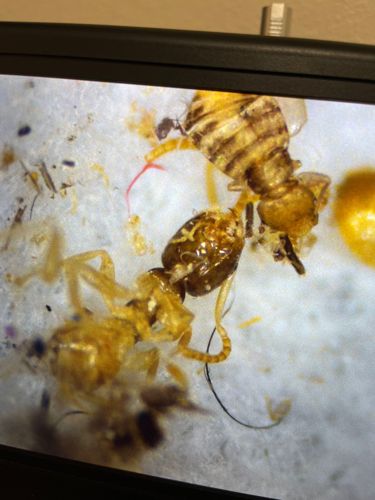Bed Bug
Scientific Name: Cimex lectularius
Order & Family: Order: Hemiptera, Family: Cimicidae
Size: Adult bed bugs are typically 4-5 mm (0.16-0.2 inches) in length, resembling an apple seed. Nymphs are smaller and translucent.

Natural Habitat
Bed bugs are most commonly found in human dwellings, particularly in beds, mattresses, bed frames, and other furniture within about 8 feet of a sleeping host. They can also hide in walls, electrical outlets, and behind picture frames.
Diet & Feeding
Bed bugs are obligate hematophagous parasites, meaning they feed exclusively on the blood of warm-blooded animals, primarily humans.
Behavior Patterns
Bed bugs are primarily nocturnal, feeding on sleeping hosts. They are cryptic and hide in cracks and crevices during the day, emerging to feed at night. They are attracted to carbon dioxide and warmth. Females lay 1-5 eggs per day, affixing them to surfaces. The life cycle from egg to adult can take a few weeks to several months, depending on temperature and food availability.
Risks & Benefits
Potential Risks: Bed bug bites can cause itchy welts, skin irritation, and in some individuals, allergic reactions. While they are not known to transmit diseases, their bites can lead to secondary skin infections from scratching. They also cause significant psychological distress, sleep deprivation, and economic burden due to control efforts. Potential Benefits: There are no known benefits of bed bugs to humans or the ecosystem.
Identified on: 9/4/2025